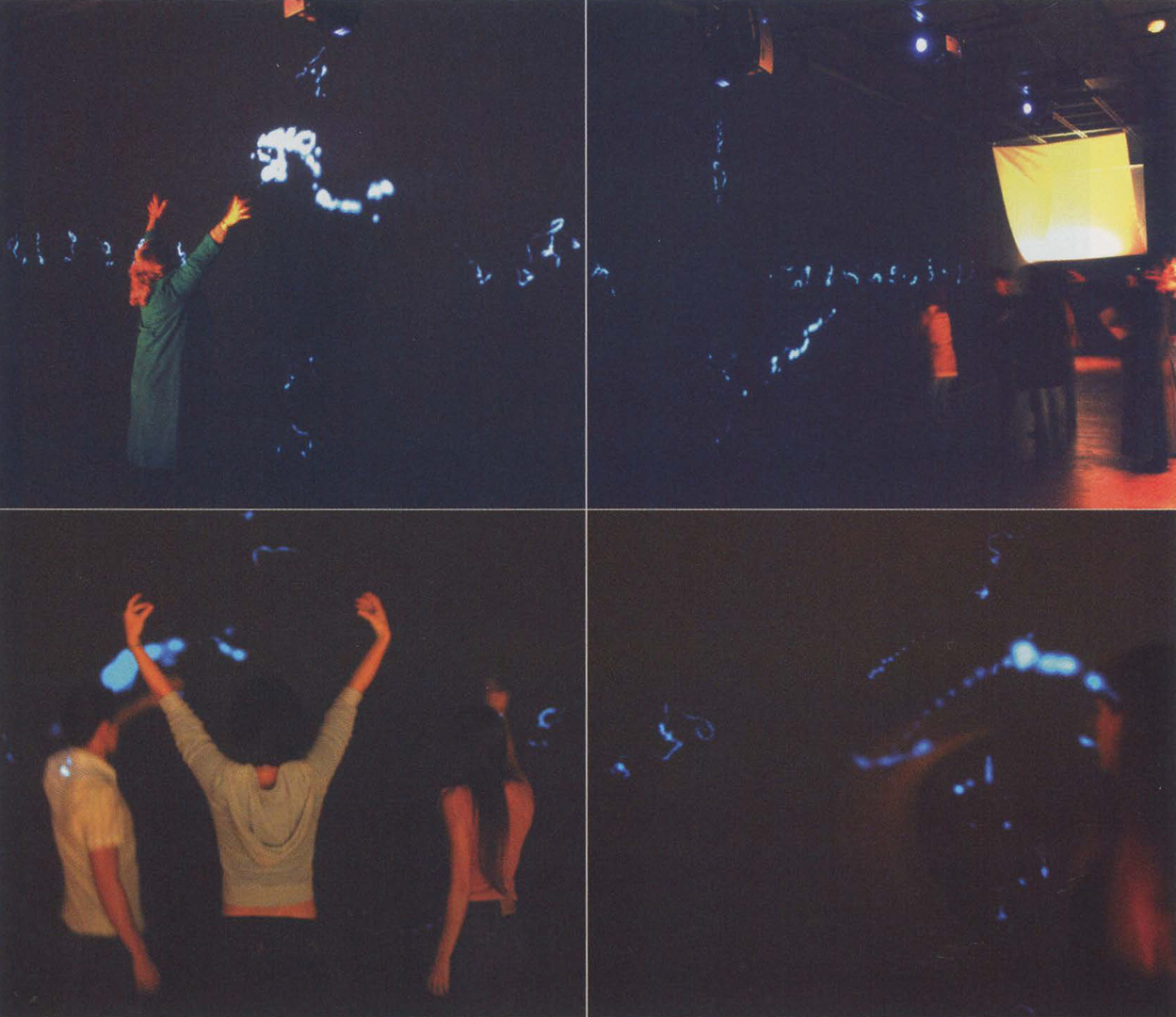Ecce Homology: Ecce Homology
Artist(s):
Title:
- Ecce Homology
Exhibition:
Creation Year:
- 2005
Category:
Artist Statement:
This physically interactive new-media work visualizes genetic data as calligraphic forms. A novel computer-vision interface allows multiple participants, through their movement in the installation space, to select genes from the human genome for visualizing the Basic Local Alignment Search Tool (BLAST), a primary algorithm in comparative genomics. For both ethical and technical reasons, the function of each gene in the human genome cannot currently be ascertained directly from the human genome itself. Usually, in order to determine the function of a gene, scientists must rely on comparisons between our genes/genome and those of other organisms. BLAST allows researchers to compare DNA or protein sequences of unknown identity, function, and structure with “knowns” from validated databases, providing a measure of similarity or homology among sequences. BLAST analyses are conducted worldwide via web servers supported by major genome sequencing consortia in Europe, Japan, and North America, as well as in local laboratories on individual computers. Every day, an average of 100,000 unique BLAST runs from 70,000 unique IP addresses are conducted on the US National Center for Biotechnology Information’s web servers. BLAST is arguably the most widely used data-mining tool in history. Yet, despite its ubiquity, BLAST is a “black-box” process that is not well understood, even by researchers in the biological sciences. For Ecce Homology, intermediate information about the progress of BLAST is revealed by an animation of the intermediate products of the algorithm as it operates on genomic data in real time overlaid on the calligraphic forms. This revelation of the operation of a normally invisible process is at the core of the installation’s aesthetic experience. Transformed into an experience that proceeds at the scale of human-perceived time, BLAST is the engine and subject of this interactive installation. We believe that an artistic, holistic visualization of genomic data coupled with an esthetically engaging interactive experience of genomics-based biology can encourage the general public to engage the subject critically. Additionally, Ecce Homology’s novel calligraphic visualization of multi-dimensional genomic data is an example of artscience research that explores the possibility that artistic or aesthetic approaches can nurture discovery in the sciences. Unprecedented amounts of genomic data are generated daily. To capitalize on this wealth of data, new tools must be developed. T he need to build knowledge from data, or to find patterns within vast datasets, is driving development and application of interdisciplinary and alternative approaches. Ecce Homology is one such approach. Its outcomes are both hybrid process and product. As the next era in the life sciences becomes increasingly dominated by interdisciplinary and discovery-based inquiry, Ecce Homology exemplifies an integrated art-science practice that goes beyond models of influence and convergence to explore the deep structures of science and technology in search of their expressive potentials and cultural relevance. T hough it is driven by aesthetics, Ecce Homology suggests a new form of scientific visualization that may one day contribute to comparative genomics. If the arts can nurture discovery in the sciences, it is possible that the process can bring about a new paradigm for our relationship to nature, one in which human creativity is the avenue for our rapprochement with nature. Ecce Homology is sponsored by Intel Corporation; NEC Solutions America, Inc.; Visual Systems Division, University of California, Los Angeles; Technology Sandbox, UCLA Academic Technology Services; Computer Graphics and lmmersive Technology Laboratory, University of Southern California Integrated Media Systems Center,;University of California, San Diego Center for Research in Computing and the Arts; UCLA HyperMedia Studio; UCSD Sixth College: Culture, Art and Technology; National Center for Microscoypy and Imaging Research; and the University of California Institute for Research in the Arts. We also gratefully acknowledge the instruction in calligraphy offered us by Hirokazu Kosaka, Buddhist priest, calligrapher, and director of the Japanese American Cultural and Community Center in Los Angeles. Special thanks to Neil R. Smalheiser, BetaTPred2, and the UCLA Fowler Museum.





